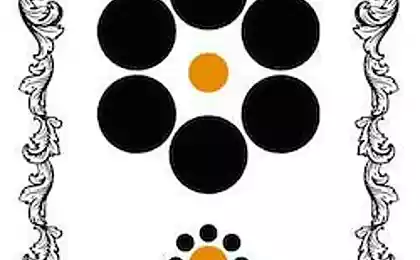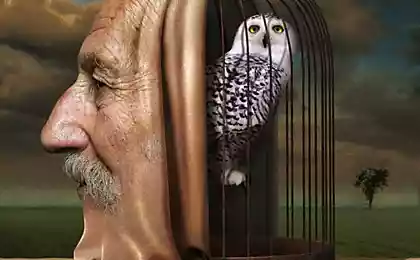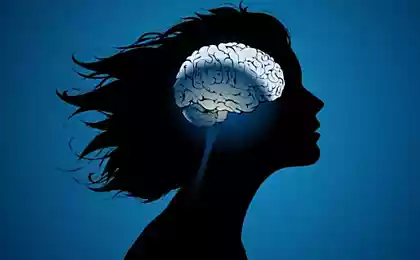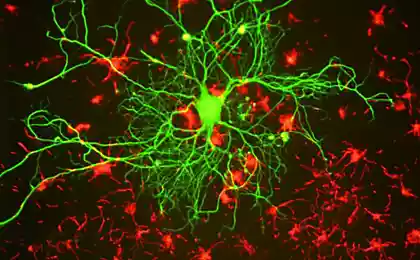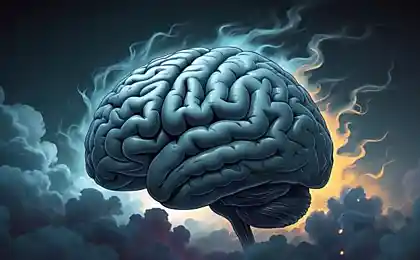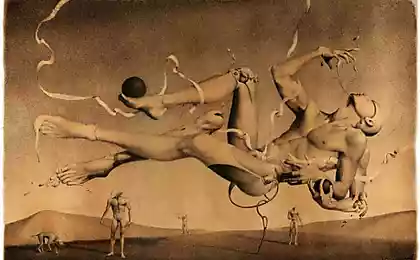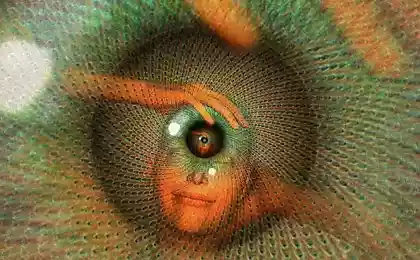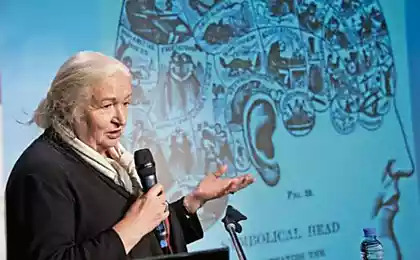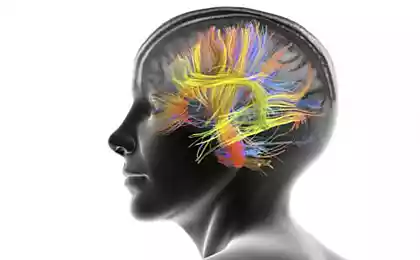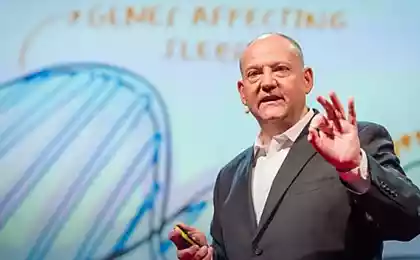630
What visual illusions can tell us about our brain
Optical deceptions, different realities, and behavioral benefits of vision errors: neuroscientist Beau Lotto tells us how the brain creates visual illusions (optical illusions), and why actually the world is not as it seems.
Look closely at the floor tiles in the following picture. First, focus your attention on the tile, which is located directly under the potted plant in the shade of the table. Then look at the tile on the right, which is outside of the table. Which one is brighter? Left?
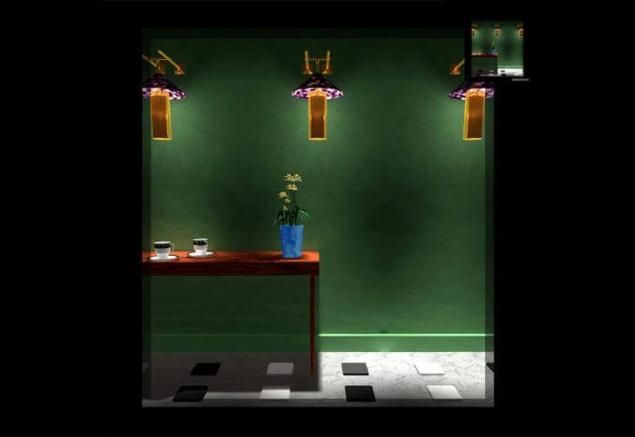
© Beau Lotto
Alas! In fact – and you can see in the image below — the colors of the tiles are identical. This trick is known as illusion of brightness. We perceive the object on a light background as darker in contrast to the same object on a dark background.
This optical illusion occurs because our visual system is tuned to the perception of contrasts that help us to distinguish forms (e.g., the upcoming predator). It turns out that we don't always see things the way they are.
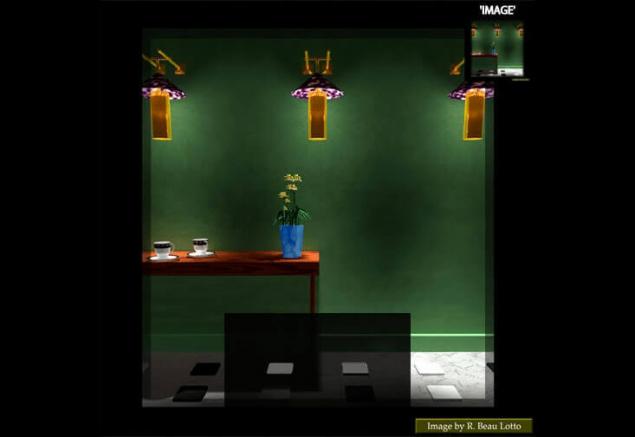
© Beau Lotto
As a neurologist who studies illusions at University College London, Beau Lotto knows all about the ways in which the brain deceives us, distorts reality for the sake of our evolutionary advantages. Journalist Nautil.us Claire Cameron talked to him about the fraudulent nature of perception and tried to figure out if we ever see the world for what it is. We translate for you the interview.
The perfect thing teach us about visual illusions and optical deceptions — that what we do is based on the assumption.
K. K.: That the illusion of brightness told of how we see?
B. L.: Everything we do is connected with our perception. Our experience of ourselves, others, the world – everything we think, believe, understand, starts with perception. And brightness is a simple mode of visual perception, whose function is limited to simple – to see the light.
Illusion of brightness tells us that even at the most basic level we can't see everything. The brain has not developed to the ability to see something absolute. It evolved before the acquisition of the ability to see relationships and see which is more beneficial from a behavioural point of view. If it works with the brightness, it has to be right about things — even to abstract concepts.
K. K.: You mean that we learn to navigate the world, recognizing model?
B. L.: Yes And no. The main problem is that our brains evolved to deal with ambiguity — ambiguity of information. The information tells us about itself; it tells us what to do. So the first thing the brain does when you look at the image, it finds the template that is nothing more than a statistical relationship.
Pattern, the pattern itself has no meaning — just as nonsensical image that you see. And you have no instructions what to do. But as soon as you interact with the world you create any "good behavior", which allows you to stay alive, or "bad behavior" that leads to death.
And your brain connects behavioural values with a pattern. This behavioral benefit, you see. Or it may be behavioral benefits that your ancestors saw it long before you. As humans we are encoded in our cultural history as well as evolutionary history.
K. K.: But can we find evidence that encoding in the human brain?
B. L.: unfortunately, we know almost nothing about how it all works mechanically. We use bumblebees as a model, because their brain contains about a million cells, compared to our billions. And they see the same visual illusions that we see. Although the mechanisms may be different, the principles will remain the same. If we are able to understand the principles, we can understand the mechanisms and apply them to other systems, such as robots.
K. K.: You've created a wearable device called LumaKey, which converts light into sound. Why?
B. L.: We wanted to create a new kind of experience, which could be fixed. Physical structure sound very different from the physical structure of light. When we translate the light into sound, the brain also receives visual information, and we can see how the speaker system creates the feeling. The question is this: will people start to "hear" visual illusions? This is one of the reasons why we have created a LumaKey. Another reason is that potentially this is a great way to compose music.
Robert Kiyosaki: don't save money
Scientists about the brain: the best of TED talks with a Russian voice acting
K. K.: is it Possible to change our perception?
B. L.: I think, Yes. The perfect thing teach us about visual illusions and optical deceptions — that what we do is based on the assumption. If you look at the illusion, not knowing that it is an illusion, you experience a sense of reality. But once I show you that this is an optical illusion, your brain starts to do something amazing: it holds two realities at the same time are mutually exclusive.
The two tiles look different, but I know that they are the same. Conceptually this is little different from the meaning of the phrase "I experience one reality today, but I can imagine a different reality tomorrow." And the only way to learn to see differently, to understand it.
P. S. And remember, only by changing their consumption — together we change the world! ©
Source: monocler.ru/pochemu-myi-vidim-zritelnyie-illyuzii/
Look closely at the floor tiles in the following picture. First, focus your attention on the tile, which is located directly under the potted plant in the shade of the table. Then look at the tile on the right, which is outside of the table. Which one is brighter? Left?

© Beau Lotto
Alas! In fact – and you can see in the image below — the colors of the tiles are identical. This trick is known as illusion of brightness. We perceive the object on a light background as darker in contrast to the same object on a dark background.
This optical illusion occurs because our visual system is tuned to the perception of contrasts that help us to distinguish forms (e.g., the upcoming predator). It turns out that we don't always see things the way they are.

© Beau Lotto
As a neurologist who studies illusions at University College London, Beau Lotto knows all about the ways in which the brain deceives us, distorts reality for the sake of our evolutionary advantages. Journalist Nautil.us Claire Cameron talked to him about the fraudulent nature of perception and tried to figure out if we ever see the world for what it is. We translate for you the interview.
The perfect thing teach us about visual illusions and optical deceptions — that what we do is based on the assumption.
K. K.: That the illusion of brightness told of how we see?
B. L.: Everything we do is connected with our perception. Our experience of ourselves, others, the world – everything we think, believe, understand, starts with perception. And brightness is a simple mode of visual perception, whose function is limited to simple – to see the light.
Illusion of brightness tells us that even at the most basic level we can't see everything. The brain has not developed to the ability to see something absolute. It evolved before the acquisition of the ability to see relationships and see which is more beneficial from a behavioural point of view. If it works with the brightness, it has to be right about things — even to abstract concepts.
K. K.: You mean that we learn to navigate the world, recognizing model?
B. L.: Yes And no. The main problem is that our brains evolved to deal with ambiguity — ambiguity of information. The information tells us about itself; it tells us what to do. So the first thing the brain does when you look at the image, it finds the template that is nothing more than a statistical relationship.
Pattern, the pattern itself has no meaning — just as nonsensical image that you see. And you have no instructions what to do. But as soon as you interact with the world you create any "good behavior", which allows you to stay alive, or "bad behavior" that leads to death.
And your brain connects behavioural values with a pattern. This behavioral benefit, you see. Or it may be behavioral benefits that your ancestors saw it long before you. As humans we are encoded in our cultural history as well as evolutionary history.
K. K.: But can we find evidence that encoding in the human brain?
B. L.: unfortunately, we know almost nothing about how it all works mechanically. We use bumblebees as a model, because their brain contains about a million cells, compared to our billions. And they see the same visual illusions that we see. Although the mechanisms may be different, the principles will remain the same. If we are able to understand the principles, we can understand the mechanisms and apply them to other systems, such as robots.
K. K.: You've created a wearable device called LumaKey, which converts light into sound. Why?
B. L.: We wanted to create a new kind of experience, which could be fixed. Physical structure sound very different from the physical structure of light. When we translate the light into sound, the brain also receives visual information, and we can see how the speaker system creates the feeling. The question is this: will people start to "hear" visual illusions? This is one of the reasons why we have created a LumaKey. Another reason is that potentially this is a great way to compose music.
Robert Kiyosaki: don't save money
Scientists about the brain: the best of TED talks with a Russian voice acting
K. K.: is it Possible to change our perception?
B. L.: I think, Yes. The perfect thing teach us about visual illusions and optical deceptions — that what we do is based on the assumption. If you look at the illusion, not knowing that it is an illusion, you experience a sense of reality. But once I show you that this is an optical illusion, your brain starts to do something amazing: it holds two realities at the same time are mutually exclusive.
The two tiles look different, but I know that they are the same. Conceptually this is little different from the meaning of the phrase "I experience one reality today, but I can imagine a different reality tomorrow." And the only way to learn to see differently, to understand it.
P. S. And remember, only by changing their consumption — together we change the world! ©
Source: monocler.ru/pochemu-myi-vidim-zritelnyie-illyuzii/


